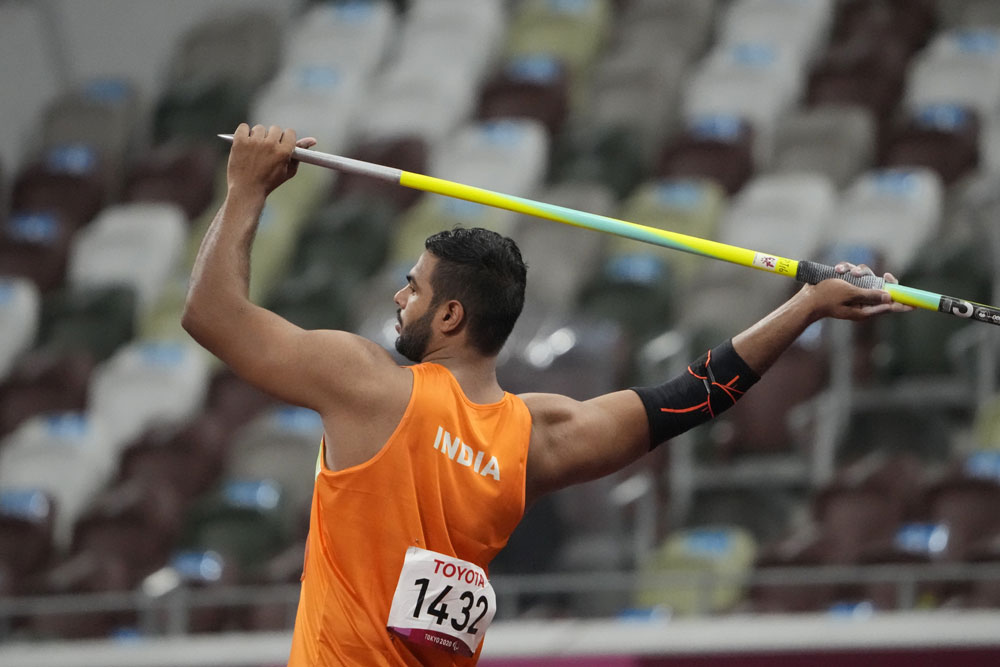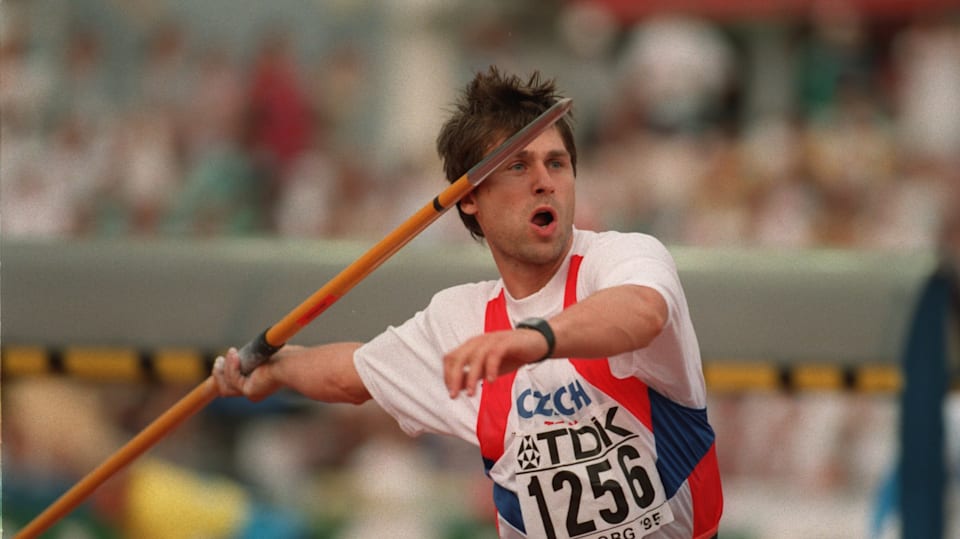History of the World Record Javelin Throw
The world record in the javelin throw has evolved dramatically over time, reflecting advancements in technique, equipment, and the dedication of athletes. From the early days of the sport to the modern era, the pursuit of greater distances has been a constant theme.
Evolution of the World Record, World record javelin throw
The world record in the javelin throw has been broken numerous times, with each new mark representing a significant milestone in the sport’s history.
- 1912: Finnish athlete Jonni Myyrä set the first official world record at the Stockholm Olympics with a throw of 62.97 meters.
- 1930s: The 1930s saw significant improvements in javelin design, with the introduction of lighter and more aerodynamic javelins. This led to a surge in throwing distances, with Finnish athletes dominating the sport. Matti Järvinen set the record at 71.70 meters in 1938.
- 1950s: The 1950s saw the emergence of new throwing techniques, particularly the “overhand throw,” which allowed athletes to generate more power and achieve greater distances. This era also saw the rise of Czech athlete Jan Železný, who would later become the most dominant javelin thrower in history.
- 1980s and 1990s: The 1980s and 1990s saw a period of intense competition, with athletes from various countries pushing the boundaries of the sport. In 1996, Jan Železný broke his own world record with a throw of 98.48 meters at the Atlanta Olympics.
- 2000s to Present: While Železný’s record has stood for over two decades, athletes continue to challenge it. The current record holder is still Jan Železný, with his 98.48-meter throw achieved in 1996.
Evolution of Javelin Design
The design of the javelin has played a crucial role in the evolution of the world record.
- Early Javelins: Early javelins were typically made of wood and were heavy and cumbersome. This limited throwing distances and contributed to the prevalence of underhand throws.
- Introduction of Metal Javelins: The introduction of metal javelins in the early 20th century revolutionized the sport. Metal javelins were lighter and more aerodynamic, allowing athletes to throw further and with greater accuracy.
- Modern Javelins: Modern javelins are made of lightweight materials like aluminum or fiberglass and are designed to maximize aerodynamic efficiency. These javelins are significantly lighter and more balanced than their predecessors, enabling athletes to generate more power and achieve greater distances.
Rules and Regulations
The rules and regulations governing the javelin throw have evolved over time to ensure fairness and safety.
- Early Rules: Early rules were relatively simple, focusing on the basic mechanics of the throw and the measurement of distance. The javelin was allowed to land anywhere within the sector, and there were no restrictions on its design.
- Changes in the 1980s: In the 1980s, significant changes were made to the rules to address safety concerns. The javelin was redesigned to have a smaller center of gravity, making it more likely to land point-first. The rules also introduced a minimum distance requirement for the javelin to land within the sector, ensuring that the throw was not too short.
- Current Rules: The current rules require the javelin to land within a designated sector, with a minimum distance requirement of 60 meters. The javelin must land point-first, and athletes are penalized for any violations of these rules. The javelin is also limited in size and weight, with specific regulations on its length, weight, and center of gravity.
Notable Javelin Throwers: World Record Javelin Throw

The world of javelin throwing has been graced by numerous talented athletes who have pushed the boundaries of human performance. From the pioneers who established the sport’s foundations to the modern-day record holders, these individuals have left an indelible mark on the history of the javelin. This section will explore the contributions of some of the most notable javelin throwers, examining their unique throwing styles, training regimens, and achievements.
Current World Record Holder
The current world record holder in the men’s javelin throw is Jan Železný of the Czech Republic. Železný’s record-breaking throw of 98.48 meters was achieved on May 25, 1996, in Jena, Germany. He holds the distinction of being the only athlete to have thrown over 90 meters on multiple occasions.
Železný’s journey to becoming a world-renowned javelin thrower began at a young age. He started competing in athletics at the age of 15, and his talent for javelin throwing quickly became apparent. Under the guidance of his coach, Jan Nerad, Železný honed his skills and developed a unique throwing style that emphasized speed, power, and precision. His technique, characterized by a powerful run-up and a smooth, fluid release, allowed him to generate incredible velocity and accuracy.
Throughout his career, Železný dominated the javelin throwing scene. He won three Olympic gold medals (1992, 1996, and 2000), three World Championships (1993, 1995, and 2001), and numerous other international titles. His consistent performance and remarkable consistency made him one of the most dominant javelin throwers in history.
Železný’s training regimen was rigorous and focused on developing his strength, speed, and flexibility. He incorporated a variety of exercises into his routine, including weightlifting, plyometrics, and running. His dedication to training and his unwavering commitment to excellence allowed him to achieve unparalleled success.
Other Notable Javelin Throwers
In addition to Jan Železný, numerous other javelin throwers have made significant contributions to the sport. These athletes have set world records, won Olympic and World Championship medals, and inspired generations of javelin throwers.
- Terence Stevens (United States) – Stevens held the world record for over 10 years (1957-1968), achieving a distance of 88.58 meters. He was a pioneer in the development of modern javelin throwing techniques.
- Steve Backley (Great Britain) – Backley was a highly successful javelin thrower who held the world record for a brief period in 1990. He won Olympic silver in 1992 and Olympic bronze in 1996.
- Aki Parviainen (Finland) – Parviainen was a dominant force in javelin throwing during the 1990s. He won the World Championship in 1991 and the Olympic silver medal in 1992.
- Andreas Thorkildsen (Norway) – Thorkildsen is the only athlete to have won two consecutive Olympic gold medals in javelin throwing (2004 and 2008). He was also a two-time World Champion (2002 and 2009).
- Barbora Špotáková (Czech Republic) – Špotáková is the current world record holder in the women’s javelin throw, with a distance of 72.28 meters. She has won two Olympic gold medals (2008 and 2016) and three World Championships (2007, 2013, and 2017).
Throwing Styles and Techniques
Javelin throwing techniques have evolved significantly over the years, with different throwers developing their own unique approaches.
“The javelin throw is a complex skill that requires a combination of strength, speed, and precision.”
Some throwers favor a more power-oriented style, emphasizing a strong run-up and a forceful release. Others prefer a more technical approach, focusing on maximizing their momentum and maintaining a smooth, fluid motion throughout the throw.
- Jan Železný – Železný’s throwing style is characterized by a powerful run-up, a high release point, and a smooth, fluid motion. His technique allows him to generate incredible velocity and accuracy.
- Terence Stevens – Stevens’ throwing style was more traditional, with a lower release point and a focus on generating power through a strong arm action.
- Steve Backley – Backley’s throwing style was known for its speed and fluidity. He had a fast run-up and a smooth release, which allowed him to achieve a high degree of accuracy.
- Andreas Thorkildsen – Thorkildsen’s throwing style was similar to Železný’s, with a focus on generating speed and power through a powerful run-up and a high release point.
The effectiveness of different throwing styles is dependent on a variety of factors, including the athlete’s physical attributes, training regimen, and personal preferences. Ultimately, the most successful javelin throwers are those who can find a technique that allows them to maximize their potential and achieve consistent results.
The world record javelin throw is a testament to human strength and athleticism, requiring years of dedicated training and unwavering focus. This dedication often stems from a deep connection to family, much like the theme explored in the mama’s boy song , where a son’s bond with his mother serves as a source of inspiration and support.
Just as a mother’s love fuels a son’s ambition, the desire to achieve greatness drives athletes to push their limits and break records, showcasing the power of human potential.
The world record javelin throw, a feat of strength and precision, has captivated audiences for generations. While the athletic prowess of javelin throwers is undeniable, the creative collaboration of Dominic Fike and Hunter Schafer, as seen in dominic fike and hunter schafer , demonstrates a different kind of power – the power of artistic expression.
Just as the javelin soars through the air, their work challenges boundaries and inspires viewers to see the world in new ways.

